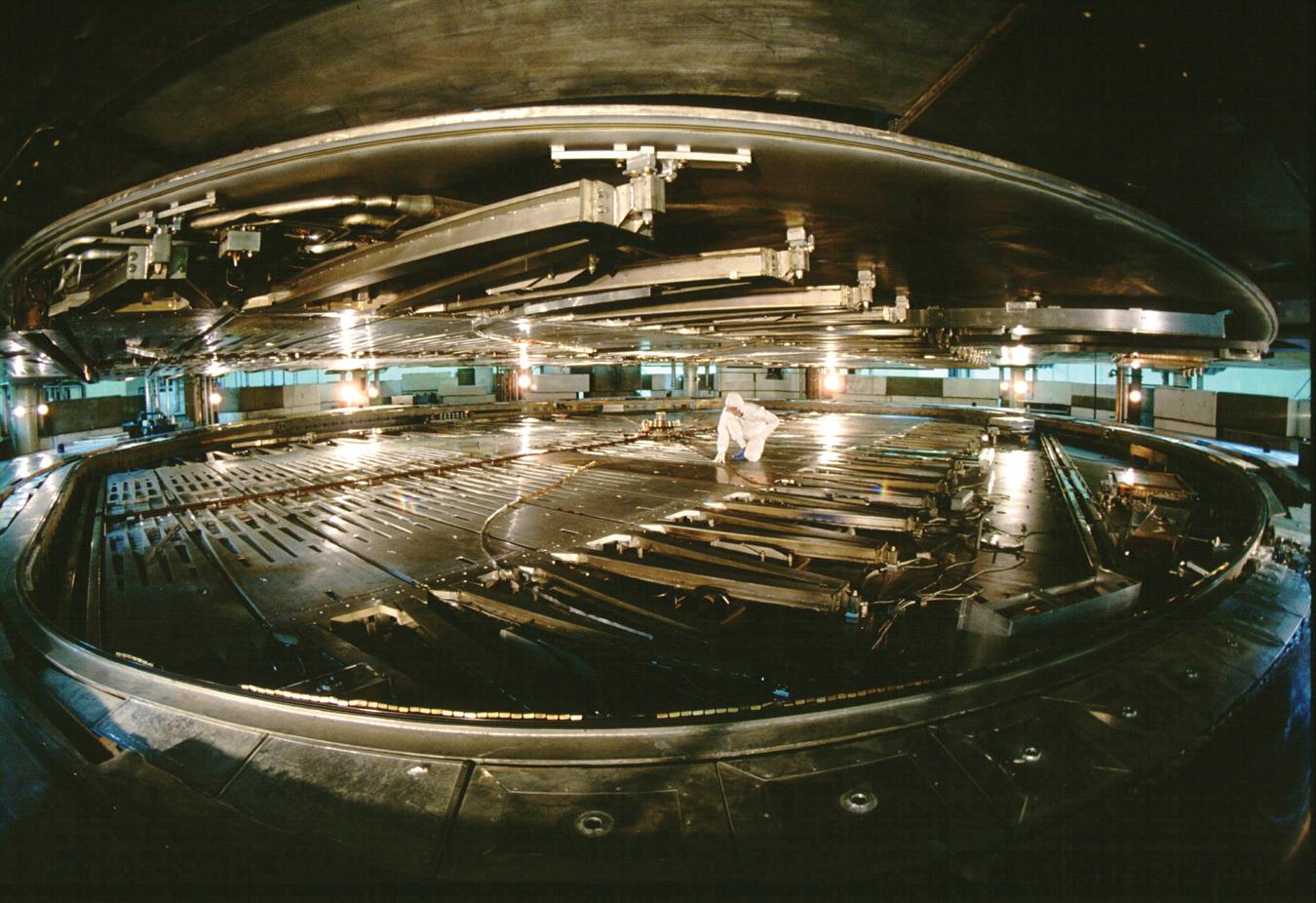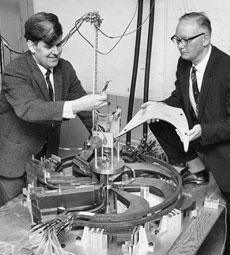|  |
| Professors E. Vogt and J. Warren work with a model of the TRIUMF main cyclotron. | Interior of the TRIUMF main cyclotron with a staff member working. The "lid" of the cyclotron can be lifted to allow access to the interior. |
IEEE, the world's largest professional association for the advancement of technology with more than 395,000 members in more than 160 countries, has recognized the extraction of the first high-energy proton beams from the TRIUMF main cyclotron on December 15, 1974 as an historic engineering milestone. The designation was approved by the IEEE Board of Directors following a careful evaluation of the historical significance and global uniqueness of the accomplishment. A dedication ceremony will be held at TRIUMF on the 36th anniversary of the event later this year.
The main cyclotron at TRIUMF is the world's largest such device; it measures 22 metres across and produces intense beams of protons at energies up to 500 Million electron-Volts (MeV). Since 1974, TRIUMF has used these proton beams (and secondary beams of pions, muons, neutrons, and rare isotopes produced in its experimental halls) to conduct pioneering studies that have advanced nuclear physics, particle physics, molecular and materials science, and nuclear medicine.
Prof. David G. Michelson, chair of IEEE Vancouver Section and a member of the Department of Electrical and Computer Engineering at the University of British Columbia, said, "The quality of the initial design and engineering of the TRIUMF 500 MeV cyclotron is underscored by the cyclotron's longevity. Thirty-five years after the first full energy proton beam was extracted, the cyclotron is still the main engine of TRIUMF's world-leading research program."
According to Dr. Nigel S. Lockyer, Director of TRIUMF, "The vision of men like Professors Reg Richardson, Erich W. Vogt, and John Warren who led the effort to establish a major physics lab in British Columbia back in the 1960s has returned remarkable value to Canada in the years that have followed. We deeply appreciate the recognition by IEEE of the significant accomplishments of those early pioneers who laid the foundations for TRIUMF's string of science and technology successes."
During the next five years, ongoing support from the Government of Canada will allow the 500 MeV cyclotron to support a variety of continuing programs including proton-based therapies for selected eye cancers, pre-flight irradiation tests and studies of aerospace components, production of selected medical isotopes, and a broad program of research in nuclear physics and materials science using short-lived, exotic isotopes.
The TRIUMF lab also operates and maintains four smaller medical-isotope cyclotrons. Lockyer added, "The deep scientific and technical expertise at TRIUMF in cyclotron technology has positioned us as a leader in developing accelerator-based alternatives for the production of crucial medical isotopes such as molybdenum-99 and technetium-99m."
See the nomination on the IEEE website.
-- Based on a TRIUMF press release
Additional Resources

